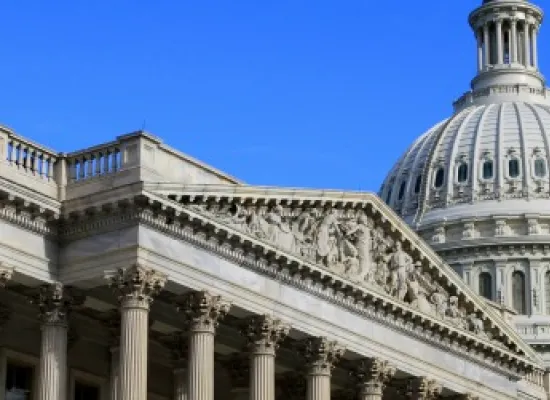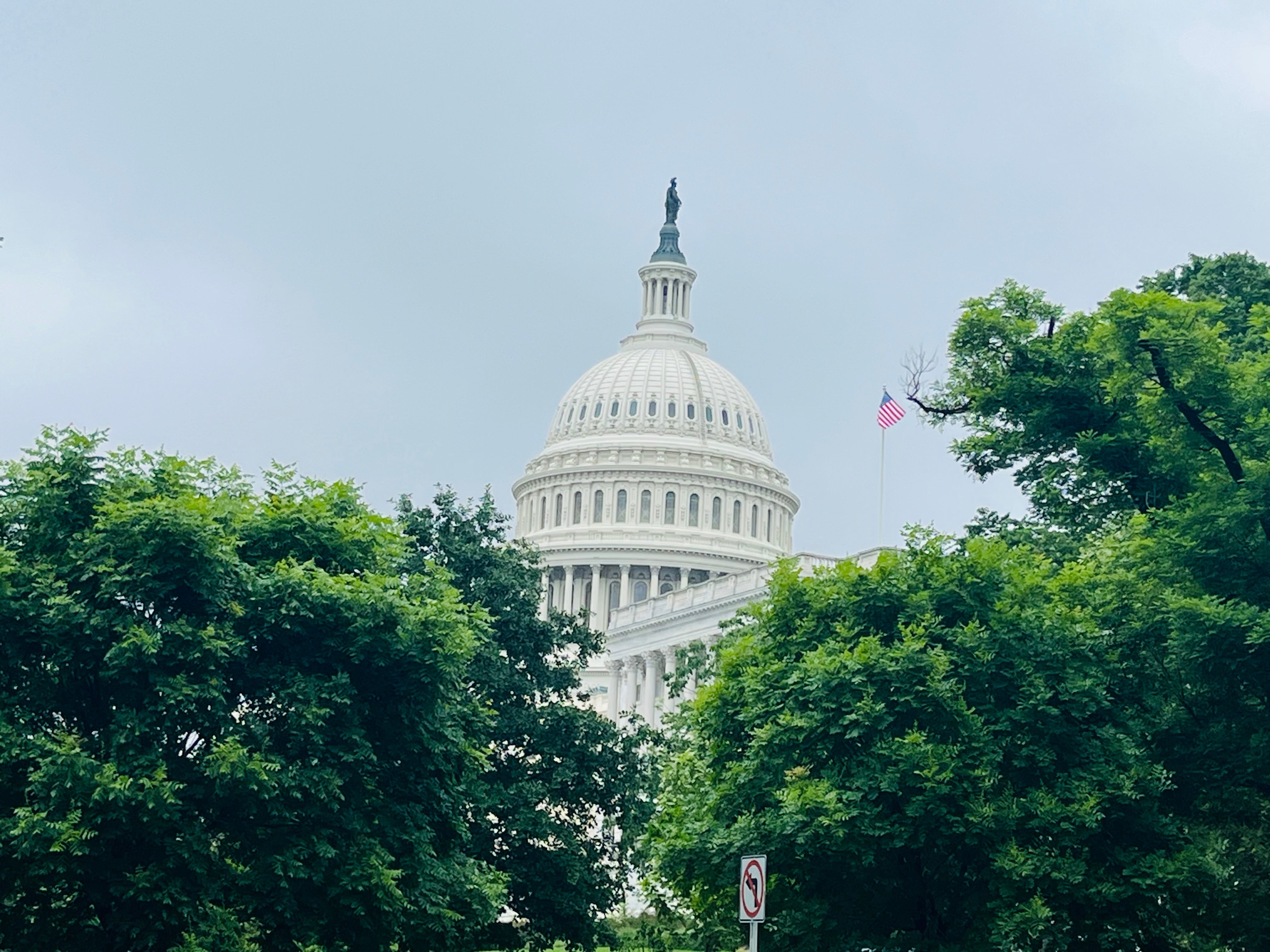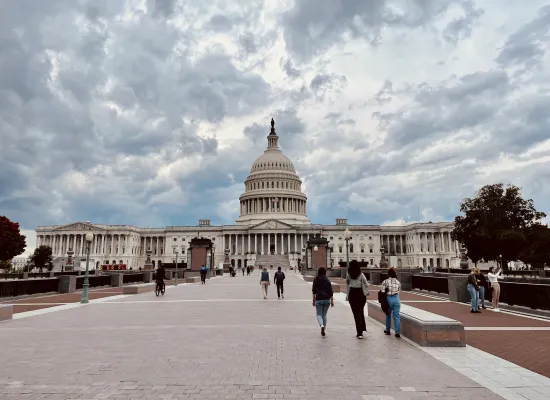
Impact of H.R. 1 on Managed Care

July 24, 2025
Impact of H.R. 1 on Managed Care
H.R. 1, or the Big Beautiful Bill, has brought substantial change to the managed care pharmacy landscape, particularly for managed care organizations (MCOs) with managed Medicaid lines of business. This memo discusses some of the key impacts to MCOs because of this law. See AMCP’s section-by-section summary for a detailed breakdown of the specific statutory provisions related to health care.
1. Increased enrollment churn in Medicaid and exchange plans
H.R. 1 contains several provisions that will drive an increase in enrollment churn in Medicaid. These provisions are: 1) work/community engagement requirements, 2) redeterminations occurring at least every 6 months (compared to the previous 12-month period), and 3) reduced eligibility for non-citizen residents.
All of these provisions require prospective and current enrollees to fill out more paperwork to receive coverage through Medicaid. Work requirements in Arkansas and Georgia have proven to be confusing for enrollees, leading eligible recipients to lose coverage.[1] About 9 in 10 adults eligible under Medicaid expansion are expected to meet the community engagement requirement.[2] Therefore, most of the roughly 5 million people expected to lose health coverage due to this program will be eligible to enroll or remain covered, but face administrative barriers that prevent verification of their community engagement.[3] Confusion on paperwork and challenges communicating with enrollees results in avoidable churn even with 12-month redeterminations. States could also choose to implement more frequent redeterminations, such as 3-month or even 1-month periods. Creating more deadlines naturally causes an increased likelihood of enrollees missing those deadlines. MCOs are prohibited from participating in eligibility verification under H.R. 1, meaning there may be delays and confusion in updating enrollee information.
Regarding the individual market, exchanges are now required to verify eligibility for premium tax credits (PTCs) prior to enrollment and re-enrollment on an annual basis. This amounts to a de facto end of passive or automatic re-enrollment by introducing a new manual process for enrollees, leading to increased churn. H.R. 1 also shortens the open enrollment period.
2. More instability in risk pools
H.R. 1 will drive instability in risk pools across markets. In addition to churn-related instability in Medicaid and state exchanges, the individual marketplace will likely see growth of adverse selection due to new limitations on eligibility for PTCs and the expected end of enhanced PTCs at the end of 2025. Enhanced PTCs were passed as part of the American Rescue Plan Act in 2020 and extended in 2022. H.R. 1 does not address the expiration of enhanced PTCs, but much of the analysis on coverage losses assumes that they will not be extended. AMCP shares this assumption.
With fewer enrollees eligible for any tax credits, lower PTC amounts, and a current individual mandate penalty of $0, we expect an increase in individuals who consider themselves unlikely to have high health care utilization choosing to be uninsured. As a result, premium costs will also likely increase.
3. Reduced funding for Medicaid, leading to reduced top-line revenue for MCOs
H.R. 1 will reshape how states fund their share of medical assistance costs, with grave implications for patients, providers, and managed Medicaid plans. The bill restricts the use of provider taxes—used by every state except Alaska to cover Medicaid costs—by limiting the assessment that expansion states can charge to 3.5% of an entity’s revenue and prohibiting taxes that treat Medicaid revenue differently than non-Medicaid revenue. More than half of expansion states have at least one provider tax that exceeds the 3.5% threshold, which phases in between 2028 and 2032.[4] Seven states may have to alter or scrap taxes on their MCOs to comply with the uniformity requirements.[5] These changes are expected to reduce federal Medicaid spending by over $200 billion, which leaves states with fewer resources to cover optional services or bolster payments to providers.[6] States rely on provider taxes to make up the difference between their Medicaid share and the money available in their general funds, which is important given that many states are struggling with unexpected Medicaid overruns. In the 41 states that partner with MCOs to offer comprehensive Medicaid managed care, provider taxes are the primary source of funds for state-directed payments (SDPs).[7]
Congress placed new restrictions on SDPs, which allow states to dictate how Medicaid managed care plans pay providers under specific circumstances. Nearly every state with comprehensive managed care has adopted at least one SDP, with payments exceeding $110 billion in 2024.[8] SDPs primarily fund uniform rate increases for providers, which helps preserve patient access by strengthening Medicaid provider networks.[9] About three-quarters of SDPs establish payment rates that reference the average commercial rate, which tends to be higher than the Medicare rate (and much higher than the Medicaid rate).[10] States typically fund SDPs by establishing separate payment terms with their MCOs or adjusting the base capitation rate. H.R. 1 limits payment rates under an SDP to the published Medicare payment rate (with a slight increase for states that have not expanded Medicaid). The new limit on SDPs may reduce federal spending by up to $150 billion over ten years, which combined with the provider tax changes, results in states losing almost $370 billion in federal support.[11] As a result, Medicaid MCOs are expected to see lower capitation rates or reduced separate payments for SDPs.
States will have to make painful decisions to account for future budget shortfalls. AMCP is concerned that states may reevaluate their managed care programs given the new constraints established by H.R. 1. While managed care offers states and Medicaid enrollees high-quality, cost-effective coverage, transitioning to fee-for-service models would give states more flexibility to provide supplemental payments to providers.
4. Increased amounts of uncompensated hospital care, possibly leading to higher costs for insured patients
Higher levels of insurance coverage, particularly through Medicaid, are associated with greater access to primary care and fewer preventable hospitalizations.[12] 17 million people are estimated to lose coverage between the H.R. 1 provisions and the expiration of enhanced PTCs. As a result, there will be more preventable and unpreventable visits to emergency departments from patients who are unable to pay, causing hospitals to seek compensation from other sources. Historically, much of this compensation has come from public dollars or charities, and very little of the cost has been shifted to commercially insured.[13] However, with the cuts to health spending included in H.R. 1, hospitals and providers may not be able to access public funds and will shift costs to the commercial population. Cost estimates of uncompensated care reflect a relatively small—but still notable—portion of overall health care spending.[14] [15]Even if we assume that 100 percent of uncompensated care costs are shifted to commercial enrollees, the impact is likely to be single-digit percentage increases.
H.R. 1 included $50 billion in a “rural health transformation fund” that may offset some hospital revenue losses due to Medicaid cuts and individual marketplace reforms. These funds will be disbursed to states over five years, largely at the discretion of the Department of Health & Human Services (HHS). The administration may choose to withhold funds from states that it perceives to be political opponents. Urban hospitals will not receive funds through this program, making them more likely to employ cost-shifting if charities cannot make up the difference.
[2] https://www.urban.org/research/publication/expanding-federal-work-requirements-medicaid-expansion-coverage-age-64-would.
[4] https://www.kff.org/policy-watch/which-states-might-have-to-reduce-provider-taxes-under-the-senate-reconciliation-bill/.
[5] https://ccf.georgetown.edu/2025/05/13/house-energy-and-commerce-committee-reconciliation-bill-would-restrict-state-use-of-provider-taxes-and-undermine-state-financing-of-medicaid/#:~:text=The%20bill%2C%20however%2C%20lacks%20the,small%20number%20of%20current%20taxes.
[7] https://www.macpac.gov/wp-content/uploads/2024/10/Directed-Payments-in-Medicaid-Managed-Care.pdf.
[8] Ibid.
[10] https://www.kff.org/medicaid/issue-brief/reconciliation-language-could-lead-to-cuts-in-medicaid-state-directed-payments-to-hospitals-and-nursing-facilities/.
[13] https://www.kff.org/uninsured/issue-brief/declines-in-uncompensated-care-costs-for-the-uninsured-under-the-aca-and-implications-of-recent-growth-in-the-uninsured-rate/.
Featured News & Resources
See Full CalendarAI Pre-Conference Program
AMCP Southwest Day of Education
Upcoming Events
AMCP offers a wide variety of educational opportunities, from events and webinars to online training.







